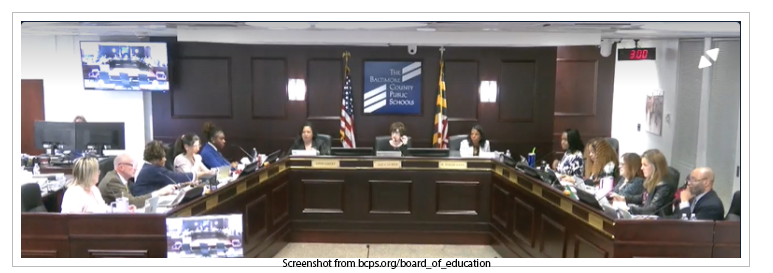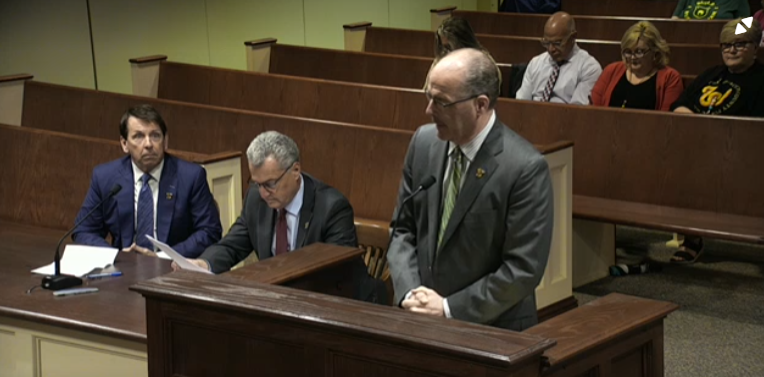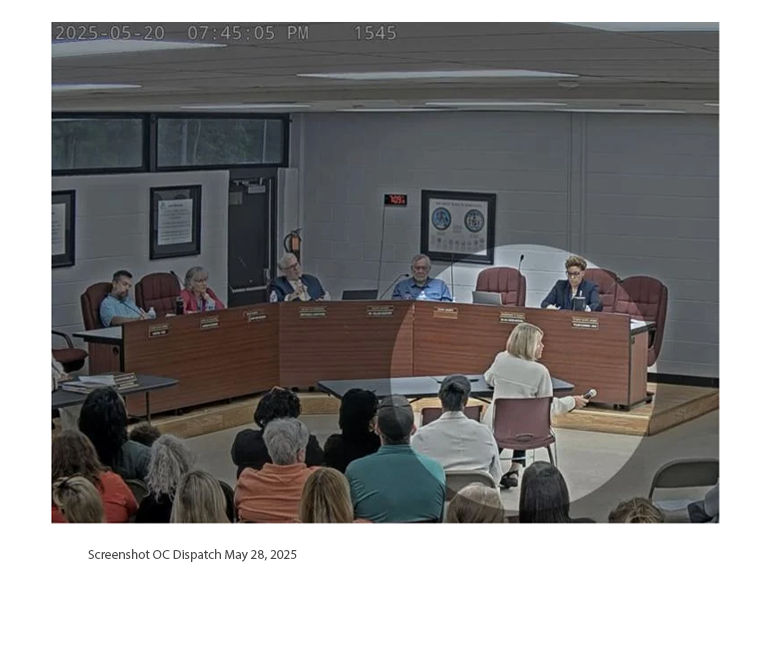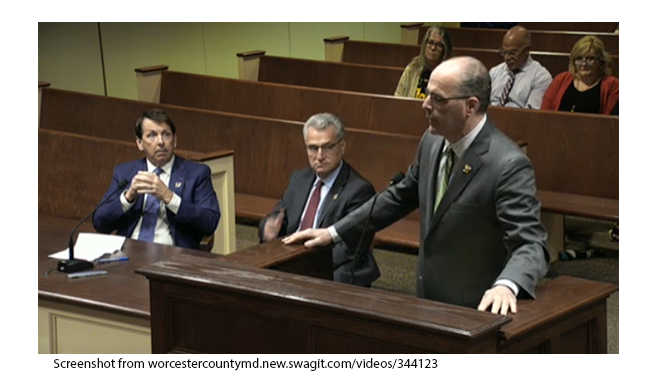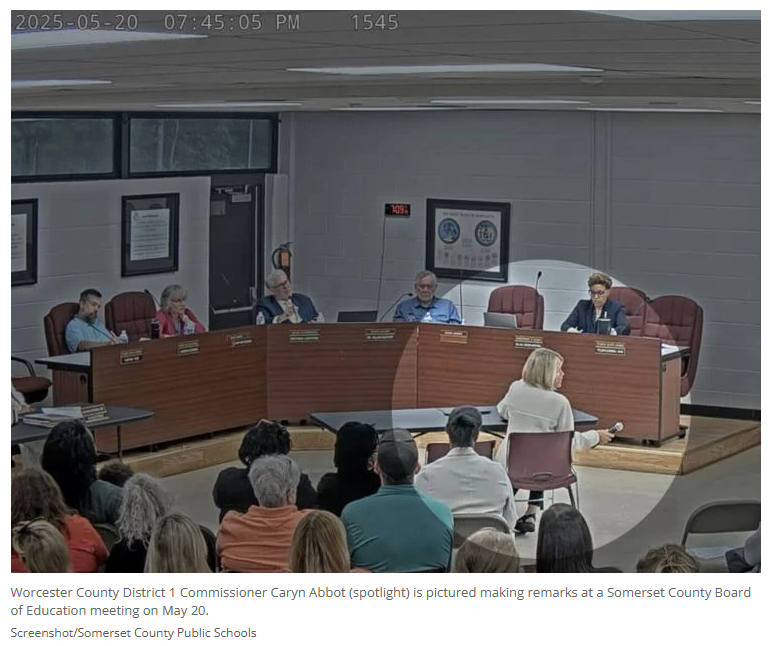
Creating This New Position Could Save Schools Money. Here’s How
School districts could collectively save millions of dollars by hiring administrators who focus on energy savings and sustainability initiatives.
That’s a key takeaway from a new report on sustainability directors and environment managers, emerging K-12 professions whose responsibilities can include tackling the escalating effects of climate change on districts as well as the already-difficult work of overseeing complex public buildings.
The report comes from the Center for Green Schools at the nonprofit U.S. Green Building Council. For the last decade, the group has cultivated a network of more than 250 K-12 employees working in these arenas. The report draws on survey responses from 59 sustainability directors in districts that altogether enroll roughly 6 percent of America’s K-12 students, as well as 19 environmental managers from districts that enroll roughly 3 percent of the U.S. K-12 population.
Staff members who answered the survey reported saving their district an average of $1 million a year, or roughly 10 times their annual salary. Those savings come by way of reducing energy use, securing grants that fund or partially fund sustainability initiatives, and implementing policies and behaviors that streamline the district’s harmful emissions.
Kate Crosby became energy manager for the 5,100-student Acton-Boxborough school district in Massachusetts in 2010. Since then, she said, her efforts have helped trim 30 percent of the district’s electricity use from before her arrival annually saving the district $500,000, or close to $300 per student.
“People treat energy expenses as a fixed river that runs in the background,” Crosby said. “They are far from fixed. They are extremely malleable.”
What does a sustainability director do?
The survey asked respondents to rate the extent of their involvement in key areas from 0, meaning not at all, to 5, for a great extent.
The sustainability directors and managers said they were most involved in district initiatives related to waste, energy, grounds, and water. Many respondents also reported solid involvement in student sustainability leadership, district planning and strategy, and capital planning.
By contrast, purchasing, transportation, teacher training, and nutrition were among the aspects of school district operations with which respondents broadly reported less direct involvement. Transportation in particular can be a key department where districts can rein in their emissions by replacing diesel buses with electric and natural gas equivalents.
Many sustainability directors report challenges with overcoming organizational barriers and enacting new district or school policies. But on average, most respondents said they have a high level of capability to influence their direct supervisor, set broad strategy for the district, and communicate sustainability goals.
They also can play a role in breaking down silos across district departments, the report says. Most respondents said they’ve been able to document sustainability metrics and implement a new policy or strategy.
Crosby said most of her success has come from convincing students to get engaged in conserving energy by turning off lights and other equipment, which then translates to interest from parents and teachers.
“They’re not going to turn down a group of earnest, committed kids. They’re going to engage,” she said.
She’s also developed relationships with custodians and showed them the cost savings that come from shutting down their building’s mechanical systems during weeks or months when schools aren’t in session.
She’s brought in more than a million dollars in state grants and utility incentives; implemented composting and recycling in every school cafeteria; and helped develop an all-electric, 175,000-square-foot school building that opened last August and contains two elementary schools and a pre-K program.
How common are these positions in school districts?
This position remains few and far between among the nation’s 13,000 public school districts. The Center for Green Schools received responses from staff members at only 0.3 percent of the nation’s districts, the report says.
Still, millions of students attend districts with sustainability staff members in place. Several large urban districts like Austin, Baltimore, New York, Orlando, and San Diego have at least one employee assigned specifically to sustainability.
The same goes for several smaller school districts also have employees doing this work, including Cheshire, Conn. (4,200 students), Mendota Heights, Minn. (5,000 students), and Loveland, Colo. (15,000 students).
Crosby said inertia and confusion over the benefits of sustainability directors are responsible for the relatively small number who are employed within school districts. In Massachusetts, many sustainability workers report to the city government and aren’t as directly embedded in schools as she is.
How do people end up in these jobs?
A growing number of people in these positions—roughly 17 percent of this year’s survey respondents—come to these jobs without any prior experience or training on sustainability. More than two-thirds said they lack relevant professional certifications. And slightly more than one-third are in coordinator positions, below the administrative level.
“This lack of professional credentialing is not surprising, considering many respondents are just entering the field, many PK-12 employers do not offer professional development funds to achieve credentials, and employers do not base promotions or salary increases on credentials,” the report says.
Many K-12 sustainability staff members got their jobs at least partially by advocating personally for the position to be created. An even greater number who answered the survey said a staff or administrative champion in their district helped spur the creation of the position.
Crosby said she got the job on the strength of environmental volunteering she’d done prior to working for the district. She eventually secured a master’s degree in sustainability, but has learned a lot in her current position, which was created for her when she arrived.
She’s not alone: More than half the staff members who answered the survey said their position was created when they were hired. Roughly one-third said their positions were created within the past three years, and only 10 percent said their position has existed for more than 15 years.
How lucrative are these roles?
Sustainability directors who answered the survey reported an average salary of $98,446.
By contrast, the average U.S. teacher makes roughly $69,000, the average principal makes just shy of $100,000, and the average superintendent makes roughly $157,000.
Some might balk at the high salaries for these positions, which don’t directly touch classroom instruction. But those investments can pay dividends, Crosby said. Her district’s electric bill has shrunk every year since she joined the district.
“We save $500,000 or more a year. That’s money the district doesn’t spend on electricity anymore,” Crosby said. “It’s all shifted over to the ed. side of the budget. That’s extraordinary.”
Dig Deeper With Our Longreads
Newsletter Sign up to get our best longform features, investigations, and thought-provoking essays, in your inbox every Sunday.
The MEN was founded by John Huber in the fall of 2020. It was founded to provide a platform for expert opinion and commentary on current issues that directly or indirectly affect education. All opinions are valued and accepted providing they are expressed in a professional manner. The Maryland Education Network consists of Blogs, Videos, and other interaction among the K-12 community.


